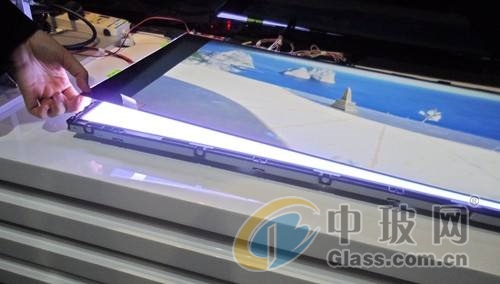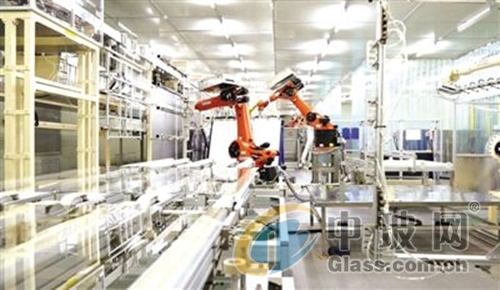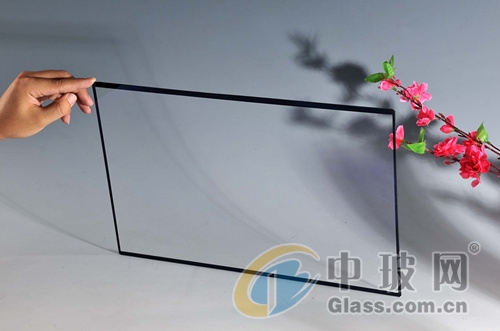[In the glass network] In recent years, the liquid crystal display technology has developed rapidly. From the development of TN, STN, TFT to AMOLED, LCD displays have won the recognition of the public with their unique high contrast and color saturation, and have gradually developed into The leading technology and research and development hotspots in the field of information display, the proportion of liquid crystal displays in the high-end flat panel display market has increased rapidly. However, there are still some complicated processes and unsolved technical difficulties in the manufacture of glass substrates.
The main reasons for these technical difficulties are: poor technical process in the process of glass substrate cutting and splitting may lead to the generation of waste products, increase production costs, and the defects in the process mainly include cracks, jumpers, corners and collapses. Along the process of cutting and splitting, a lot of glass swarf will be produced. The presence of these swarf will affect many processes, such as liquid crystal infusion, product cleaning, COG (chip on glass) and polarized film. May produce waste. Therefore, the further improvement of the TFT-LCD manufacturing process is a hot spot for many companies.
1. Overview of glass substrate cutting and splitting
The production line of liquid crystal panels is divided according to the size of the glass substrate. Different generation lines can cut different products, which can save production cost by avoiding unnecessary waste. For example, the size of the 4.5 generation line glass substrate is approximately 920 mm x 730 mm.

The glass split refers to the crack that occurs after the glass substrate is cut. In general, the crack has a depth of 70 to 100 μm. Then, a certain external force is applied to the back of the crack to separate the glass. Since the thickness of the glass substrate is different, the crack generated after being cut is also different, and the rupture pressure of the splitter is also determined according to the thickness of the glass substrate to be cut.
Theoretically speaking, if the splitting machine is to cut the glass smoothly, the rupture pressure should be greater than the breaking strength of the glass substrate. Lateral microcracks and vertical cracks are generated in the process of cutting the lobes of the glass substrate. Generally, the lateral microcracks will expand laterally during the lobing process to form glass cullet; and the vertical crack will penetrate the entire glass substrate longitudinally during the lobing process, The glass broke.
2, the fracture mechanism
The theoretical basis of microcracks is the fracture of brittle materials. The fracture process is divided into two steps, one is the generation of microcracks; the other is the microcrack extension. The magnitude of the microcrack end stress is not affected by its shape, but by the radius of curvature of the end and the length of the microcrack.
The specific mechanism of action is: when an external force acts on the brittle material, the edge stress of the microcrack increases rapidly, and the length of the microcrack increases with the increase of the edge stress of the microcrack. This is what we call micro Crack propagation.

By studying the fracture process of brittle materials, we find that there is a critical length of brittle material fracture. When the microcrack length is larger than the critical length, the microcrack will automatically transition from the extended state to the fracture state. In this process, microcracks The edge stress is getting larger and larger, and the elastic strain energy released is also getting larger and larger, resulting in more microcracks and branches, which in turn produce many new surfaces. These surfaces are rough and have a corrugated shell shape. Absorb excess elastic strain energy.
3, the process of cutting the shards of the glass substrate
At present, there are two main ways for the glass substrate to cut the lobes. One is to cut both sides at the same time; the other is to cut one side first and then the other side. The process flow of the TFT-LCD cutting lobes is: cutting the TFT surface; cracking the TFT surface on the reverse side; cutting the CF surface; and cracking the CF surface.
After the cutting is completed, the splitting is started. The splitting is to achieve the purpose of separating the glass. The main operation process is to apply a certain external force on the glass substrate by cutting, so that after cutting, certain cracks are generated in the longitudinal direction of the glass substrate. It will gradually expand until the end of the glass, allowing the glass to separate.

In general, the split is mainly done by means of a splitter. From the perspective of the structure of the splitting machine, the splitting machine is mainly composed of a cutter head, a splitting platform and a polyurethane knife with a width of 0.01 mm. During the splitting process, when the splitter head contacts the surface of the glass substrate, the splitting pressure can be applied to the glass. The origin of the cutter head in the structure of the splitter is the position where the cutter head and the glass substrate are in contact. When the cutter head just touches the glass substrate, the glass substrate is not pressed. Only when a certain pressure is set, the cutter head acts on the glass. Substrate. The pressure of the splitter head is set according to the thickness of the glass substrate.
Taking a TFT-LCD as an example, the glass substrate has two substrates bonded together. Generally, the electrodes are fixed on the TFT substrate, and the TFT substrate is split during the splicing process. Therefore, if the pressure set by the splitter is not suitable, It may cause the electrode to be crushed.
4, the conclusion
With the rapid development of science and technology, people have higher and higher requirements for the quality of life, and the pursuit of visual enjoyment has become the main source of consumption. More and more TV manufacturers are focusing on thin screens, large screens and sharpness to attract consumers. This requires glass substrates to become thinner and liquid crystal displays to become larger and larger. This requires us to have exquisite glass substrate cutting and splitting technology and process, so we must strengthen the research on glass substrate cutting and splitting technology to adapt to the rapid development of social needs.
Piano Cover,Piano Dust Cover,Piano Cover Cloth,Piano Keyboard Cover
changshu tokoh-tex trade co.,ltd , https://www.ttpolyfabric.com